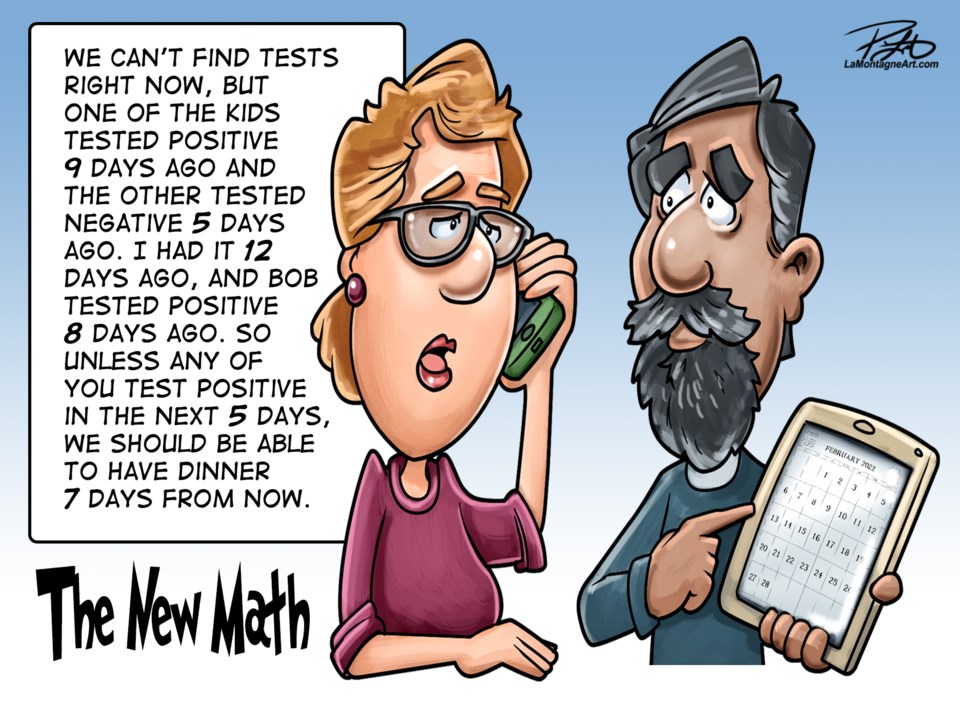In the nearly two years the world has been in the COVID-19 pandemic, there have been many times when the coming weeks are expected to be the toughest.
But when Alberta Health Minister Jason Copping said it at his Jan. 25 press conference, there was a different tone.
It was more somber opposed to previous rash decision making and declarations of having the best summer ever.
While he said early indications are showing the spread of the Omicron variant is declining, hospitalizations are still climbing.
But unlike in the past where provincial leadership has raced to remove public health restrictions, Copping highlighted that though people are tired of restrictions, not to expect any reductions in those in the immediate future.
The rare hint of leadership was a promising tone that the province actually may stay the course when it comes to wanting to keep its citizens healthy.
However, Premier Jason Kenney continues to keep true to himself by making friends with unvaccinated truckers and posting photos from grocery stores claiming the border restrictions are the cause. Food distribution and policy experts have said it’s too early to tell if it’s the case and warned against pushing people into potentially panic buying.
While testing has largely fallen off the cliff, when people are getting tested the results coming back are about a one-in-three chance of being COVID-19 positive.
According to the provincial data on Jan. 25, there was a seven-day positivity rate of 36.9 per cent.
The province still has close to 1,400 hospitalizations, including more than a 100 in intensive care, and a death total nearing 3,500.
Tests remain rarer than faberge eggs, many schools are still waiting for the promised rapid antigen tests and the masks that have made their way are often ill-fitting for children.
Field hospitals are also being prepared in Edmonton and Calgary to aid the crumbling healthcare system, but while the extra beds are brought in it doesn’t mean more staff come with them.
Hundreds of student nurses have been brought in, but simply throwing coal into the fire doesn’t solve the core issues.
Already taxed to the brink, healthcare staff have borne the brunt of the multiple COVID-19 waves.
The most recent federal data has Alberta youth between five and 11 lagging behind the rest of the country when it comes to getting vaccinated. As of Jan. 15 – the most up-to-date information – has only 39.81 per cent with a first dose. The next lowest is British Columbia at 47.44 per cent.
There are many issues with the provincial and national response to the pandemic. There is likely not enough space to put down all the words to note the failures of leadership in the past two years.
People are exhausted by the pandemic.
Across the country, when the fifth wave hit there was a feeling of resignation as tests fell to the wayside and the proclamation by many public health officials was to act as if everyone had COVID.
But with the toughest weeks likely yet to come, people need to continue to follow through with the measures in place.
There is a light at the end of the tunnel.




